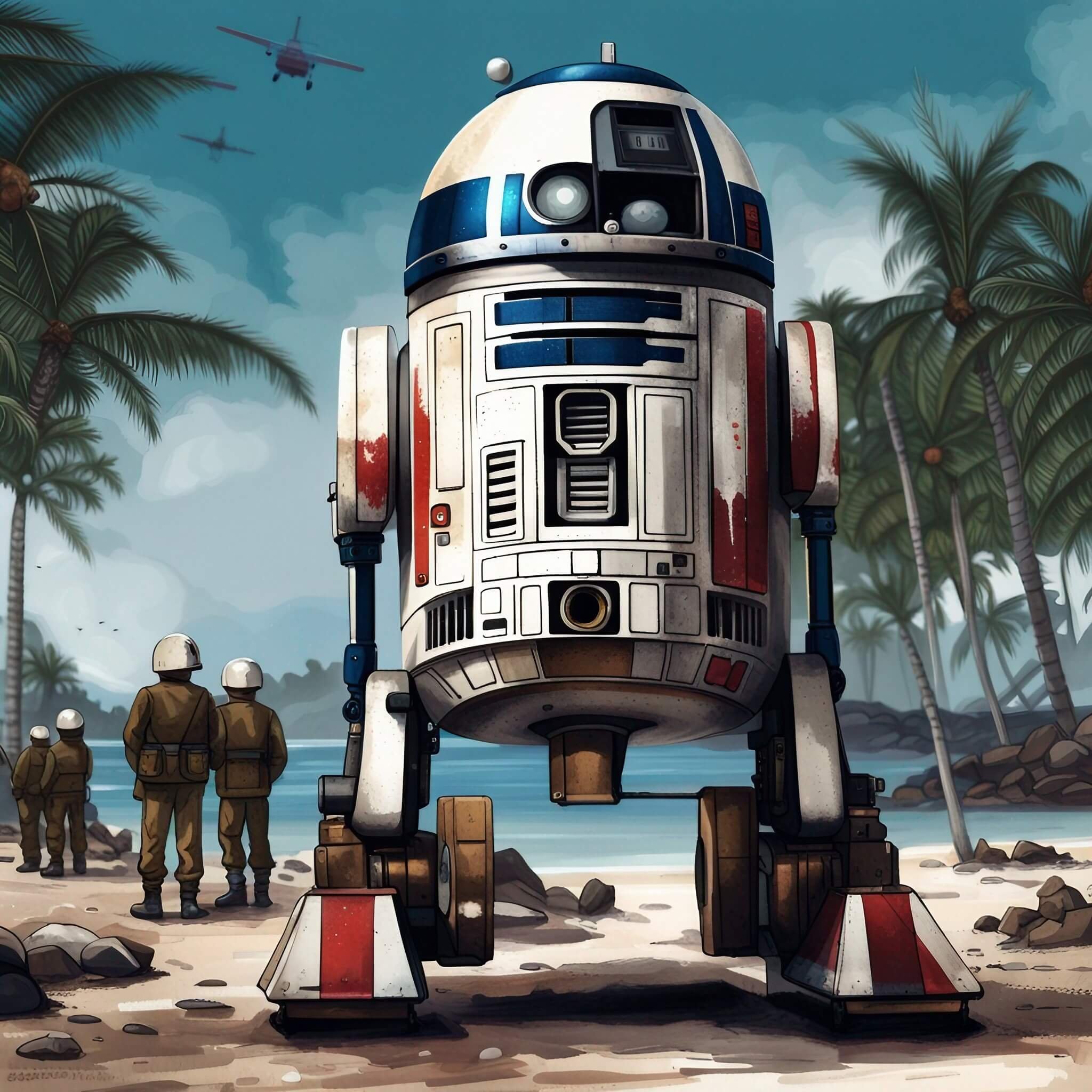Astromechs To The Rescue!
This photograph of a U.S. Naval shipman posing with an R2-type astromech droid was taken in 1942 during the aftermath of the infamous attack on Pearl Harbor.
The attack on Pearl Harbor was a surprise attack against the United States' naval base at Pearl Harbor, Hawaii by the Japanese navy, on the morning of Sunday, December 7, 1941, resulting in the United States becoming involved in World War II. It was intended as a preventive action to remove the U.S. Pacific Fleet as a factor in the war Japan was about to wage against Britain, the Netherlands, and the United States. Two aerial attack waves, totaling 353 aircraft, launched from six Japanese aircraft carriers.
The attack wrecked two U.S. Navy battleships, one minelayer, and two destroyers beyond repair, and destroyed 188 aircraft; personnel losses were 2,388 killed and 1,178 wounded. Damaged warships included three cruisers, a destroyer, and six battleships (one deliberately grounded, later refloated and repaired; two sunk at their berths, later raised, repaired, and eventually restored to Fleet service). Vital fuel storage, shipyard, maintenance, and headquarters facilities were not hit. Japanese losses were minimal, at 29 aircraft and five midget submarines, with 65 servicemen killed or wounded.
After a systematic search for survivors, formal salvage operations began. Captain Homer N. Wallin, Material Officer for Commander, Battle Force, U.S. Pacific Fleet was immediately retained for salvage leadership in Pearl Harbor; It is believed that Wallin imported a special shipment of R2 units to assist the salvage operations.
Around Pearl Harbor, divers from the Navy (shore and tenders), the Naval Shipyard, and civilian contractors (Pacific Bridge, and others) began work on the ships which could be refloated. They patched holes, cleared debris, and pumped water out of ships. Navy divers worked inside the damaged ships. Within six months, five battleships and two cruisers were patched or refloated so they could be sent to shipyards in Pearl and on the mainland for extensive repair. Wallin had been quoted as giving credit to his "little friends". Now, we fully understand his comment – referring to the R2 astromechs' precise work.
The center of the droids' success could be attributed to its Intellex IV computer, which featured 700 different spacecraft configurations. Understanding U.S. Naval ships would have been a simple task. Its sensor package was equally impressive, with a full-spectrum transceiver and electromagnetic, heat, motion, and life form indicators. The droid also had a fully maneuverable video sensor, deployed from its domed head, allowing it to inspect enclosed spaces or peer over obstacles.
The droid's outer shell concealed an array of tools beneath its streamlined durasteel exterior. Each R2 came equipped from the factory with two manipulator arms, an electric arc welder, circular saw, computer scomp link arm, holographic recorder/projector unit, internal cargo compartment, and a general-use fire extinguisher. ISWWR have speculated use of eclectic items as underwater propellers, laser pointers, jet thrusters, remote sensor limpets, and inflatable life rafts to have been used on the Pearl Harbor salvage mission.
Divers logged in 20,000 hours under water with zero visibility. They worked in water with heavy oil, dangerous debris, decomposing bodies, and unexploded ordnance. Droid reinforcements would have been an obvious choice for certain tasks. ISWWR investigators speculate that several types of droids were employed by the U.S. Navy in addition to the R2 units and so the investigation into the galactic technology used at Pearl Harbor continues...
Evidence #: ISWWR0000053
Submitted by: J. Lamb

